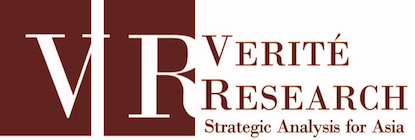Process, Progress and the Public
Where is Sri Lanka located on the spectrum of media ownership transparency?
The transparency of media ownership becomes a conversation of public interest against the backdrop of the Sri Lankan government’s expressed recognition regarding the importance of improved media freedom and access to information. While it is possible to access information on media ownership, there is a high financial cost when seeking greater transparency in this regard. The Media Ownership Monitor (MOM) team’s findings aim to map out: (1) the benefits of media ownership transparency and (2) the available processes for accessing information on media ownership, along with their pros and cons. Additionally, our findings include the transparency index of each media outlet studied.
(1) Benefits of ownership transparency
The availability of accurate and up-to-date information on media ownership acts as a stepping stone towards a healthier democratic system. Open knowledge on media ownership mutually benefits both media owners and the public. Some of the benefits of media ownership transparency include:
- Enabling trustworthy and accountable relationships between providers of information and members of the public;
- Facilitating discussions among regulators, media owners and the public on concepts such as media concentration and pluralism; and
- Enabling meaningful controls over concentration and thus, promoting healthy, competitive markets and reducing corruption.
(2) Accessing information on media ownership
The MOM team identified and evaluated three processes to gain access to media ownership information in Sri Lanka: (a) requesting information from the media company itself, (b) purchasing information from the Department of Registrar of Companies (ROC) and (c) filing a request under the Right to Information (RTI) Act. The pros and cons of these processes are stated below.
a) Requesting information from the media company
Organisational transparency can generally be understood as the willingness of a media company to provide information upon request. In this instance, either owners can openly display their ownership through their respective outlets or enable the public to send requests for information.
Pros: Owners’ willingness to disclose their information to the public demonstrates their recognition of the benefits of ownership transparency. It also allows the public to gain information from the original source and is a direct transaction of information.
Cons: While this is possibly the most effective method of obtaining information on ownership, there is room for owners to selectively disclose their information. For instance, if a media company is owned by several other companies, members of the public would not know the natural owners, i.e. the 'real' owners, behind these respective shareholding companies. Moreover, if proxy owners are listed as natural owners, it would still pose difficulty to identify the ‘real’ owners of a media company.
b) The Department of Registrar of Companies (ROC)
The ROC remains the sole institution that oversees the registration of private companies, including media companies, in Sri Lanka. As a state body that is entrusted with gathering information on the ownership of companies, it is mandated to provide access to information related to: the articles of incorporation, register of shares and the register of directors. This information can be obtained upon the payment of a fee to the ROC.
Pros: The information available at the ROC is considered to be credible, as it is given via a government body. Moreover, information can be manually accessed within a single day, provided the registration numbers of the respective companies and their corresponding files are available for viewing.
Cons:
- Ownership details for those residing in Sri Lanka and abroad can only be accessed at the ROC located in Colombo;
- The cost for inspecting company files is LKR 1,150 (USD 7.28). Certified copies of a single form within each file costs a similar amount and takes a minimum of 4-5 days;
- Files maintained at the ROC occasionally contain outdated information, with annual returns not filed in nearly a decade. Files are also stored under poor conditions, causing certain forms to be misplaced or file contents to collapse and deteriorate due to insects;
- Due to strict regulations such as no photographs and scanned images, data must be written on A4 papers with pencils. The entire process can be both cumbersome and time-consuming, but also prone to be contested as they are handwritten notes.
c) Right to Information Act (RTI)
An alternative to obtaining media ownership details directly from media outlets or the ROC’s standard process is filing an application under the Right to Information (RTI) Act.
Pros: RTI’s can be used to obtain ownership information in the mediums of radio and television, as they use frequencies that are allocated by the state.
Cons:
- RTI applications can be used to obtain ownership data from the mediums of radio and television, but not from the medium of print. This is because publishing houses do not rely on government printing services.
- Using this method does not allow the applicant to by-pass the costly monetary stipulation and the process of taking hand-written notes at the ROC.
- The process can be time consuming (from a minimum of 2 weeks to 6 months).
Transparency rating for Sri Lanka
The MOM team rated the transparency of each print, radio, television and online outlet as per MOM’s methodology. The results of these 46 outlets were as follows:
Sources
de Silva, Charumini (2018). Disclosure on beneficial ownership to ensure greater transparency.
Accessed on 08 October 2018
Parliament of the Democratic Socialist Republic of Sri Lanka. The Right to Information Act No. 12 of 2016.
Accessed on 08 October 2018
Parliament of the Democratic Socialist Republic of Sri Lanka. Companies Act No. 07 of 2006.
Accessed on 08 October 2018
Registrar of Companies. Objectives and Functions of the ROC. Registrar of Companies.
Accessed on 08 October 2018
Sarvananthan, Muttukrishna (2016). The Right to Information Act and its discontents.
Accessed on 08 October 2018




